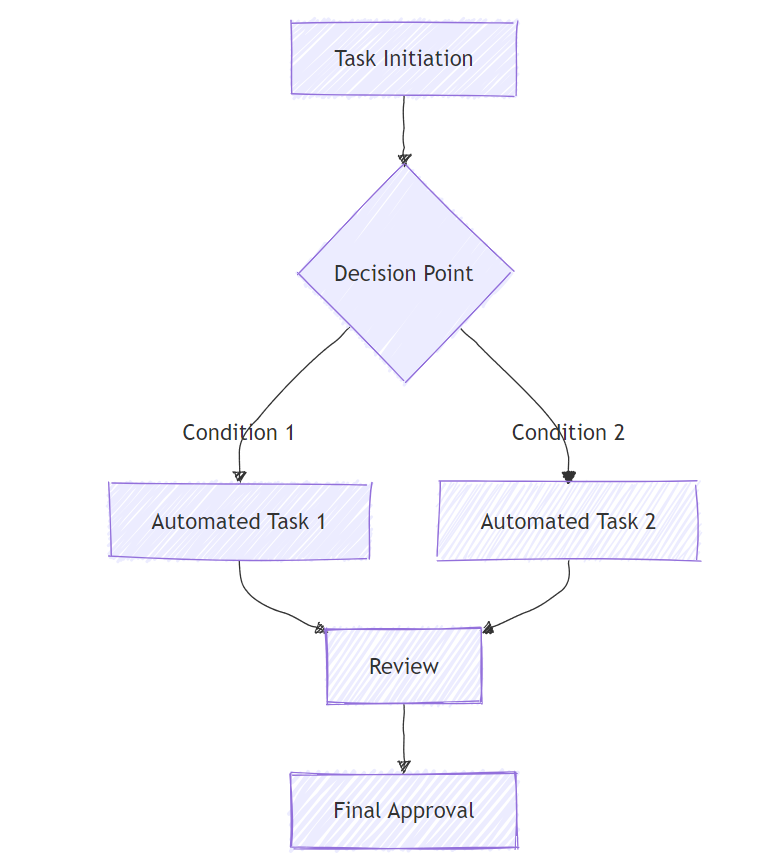In today's fast-paced business environment, automating workflows has become crucial for improving operational efficiency. Organizations that embrace automation can streamline processes, reduce manual tasks, and focus on higher-value activities. However, to truly maximize the benefits of workflow automation, it’s important to approach the task strategically.
In this guide, we explore everything you need to know about automating your workflows, with essential insights on best practices, tools, and challenges you may encounter along the way.
Why Workflow Automation is Critical for Success
Workflow automation simplifies repetitive tasks, reduces errors, and accelerates decision-making processes. When properly implemented, it empowers teams to focus on strategic work that drives business growth. Automation also enhances collaboration, ensures compliance, and improves visibility across operations.
Key Benefits of Automating Your Workflow:
- Increased Productivity: Automation eliminates time-consuming manual tasks, allowing employees to focus on more valuable work.
- Improved Accuracy: Reducing human intervention in data entry and processing helps eliminate errors.
- Scalability: As your business grows, automation ensures that processes scale efficiently without increasing workload.
- Cost Savings: Automating workflows reduces the need for additional resources, ultimately cutting operational costs.
3 Key Considerations When Automating Your Workflows
1. Selecting the Right Processes to Automate
Not all workflows are suited for automation. Start by identifying repetitive tasks that consume significant time and resources. High-volume, rule-based tasks are ideal candidates for automation. For example, manual data entry, invoice processing, and report generation can be easily automated, allowing employees to focus on more complex tasks.
Consider the following factors when selecting processes for automation:
- Frequency: Automate tasks that occur frequently and follow a set pattern.
- Volume: Tasks with a high volume of transactions are prime candidates for automation.
- Standardization: Processes that have a consistent set of rules are easier to automate.
2. Choosing the Right Tools
Selecting the appropriate tools is essential for successful workflow automation. The right platform should be scalable, user-friendly, and capable of integrating with your existing systems. Many modern tools, such as monday.com, Zapier, and Make.com, allow businesses to automate processes with minimal coding. Cloud-based platforms provide flexibility, ensuring teams can access and manage workflows from anywhere.
Look for these features when evaluating automation tools:
- Integration Capabilities: Ensure the tool integrates seamlessly with your current systems.
- Ease of Use: Choose platforms that allow non-technical users to design and manage workflows.
- Scalability: The tool should be able to grow with your business and support more complex automations in the future.
3. Addressing Potential Challenges
While workflow automation offers many benefits, it’s not without challenges. Implementing automation requires careful planning and ongoing management to ensure the system continues to run smoothly. One of the biggest challenges is overcoming resistance to change. Employees may be hesitant to adopt new systems, so providing adequate training and communicating the benefits of automation is essential.
Common challenges include:
- Employee Resistance: Ensure buy-in from stakeholders by involving them early in the planning process.
- Technical Limitations: Not all processes are suited for automation due to their complexity or reliance on human judgment.
- Maintenance: Automated systems require regular monitoring and updates to ensure they are functioning as expected.
How to Implement a Successful Workflow Automation Strategy
Step 1: Map Out Current Processes
Start by mapping out your existing workflows to understand how tasks flow from one stage to the next. Identify bottlenecks, redundancies, and inefficiencies that can be addressed through automation. Use process flow diagrams to visualize the steps and decision points.

Step 2: Select Automation Software
When it comes to automating workflows, choosing the right software is crucial. Two of the most powerful tools available today are monday.com and Make.com (formerly Integromat). Both platforms offer robust automation capabilities, enabling businesses to streamline complex workflows and eliminate manual tasks with ease.
monday.com is a flexible work operating system (Work OS) designed to help teams plan, track, and automate workflows. It's known for its user-friendly interface and the ability to customize workflows to fit a wide range of business processes.
Make.com specializes in integrating apps and automating complex workflows, offering a much deeper level of customization than many other automation tools. Make.com provides users with a visual platform where they can connect apps, define triggers, and create detailed automation flows.
By integrating monday.com with Make.com, businesses can unlock even more advanced workflow automations.
Step 3: Start Small and Scale
Start by automating a few simple tasks to test the system and ensure it works as expected. Gradually expand the automation to cover more complex workflows. This approach allows you to learn and adjust as you go, minimizing disruption to your operations.
Step 4: Monitor and Optimize
Once your workflows are automated, monitor their performance regularly. Look for ways to improve efficiency and adapt the system as your business grows. Automation tools often provide detailed analytics and reporting, allowing you to measure the impact of automation on your productivity and efficiency.
The Future of Workflow Automation
As technology continues to evolve, so does the potential of workflow automation. The rise of artificial intelligence (AI) and machine learning (ML) has introduced new possibilities for automating even more complex tasks. For example, AI-powered tools can predict workflow outcomes, optimize processes in real time, and provide actionable insights for decision-making.
Key trends shaping the future of workflow automation:
- AI Integration: AI will play a larger role in automating decision-making processes, allowing businesses to anticipate and respond to changes more efficiently.
- Advanced Analytics: Automation platforms will offer deeper insights into performance metrics, enabling companies to make data-driven improvements.
- Cross-Platform Integration: Workflow automation will become more seamless as tools integrate across different business applications, creating a unified ecosystem for managing tasks and data.
Conclusion
Workflow automation is no longer a luxury but a necessity for businesses that want to remain competitive in today’s market. By selecting the right processes to automate, choosing the right tools, and addressing potential challenges, businesses can significantly improve their operational efficiency and drive growth. As technology continues to advance, the opportunities for automation will only expand, offering even greater innovation potential.
Ready to take your workflow efficiency to the next level? Whether you're looking to automate processes, streamline operations, or improve team collaboration, we're here to help! Our experts specialize in implementing and customizing automation solutions with tools like monday.com and Make.com.
Contact us today to learn how we can tailor automation strategies to fit your business needs and drive productivity. Let’s work together to optimize your workflows for maximum efficiency!

 monday.com Services
monday.com Services


